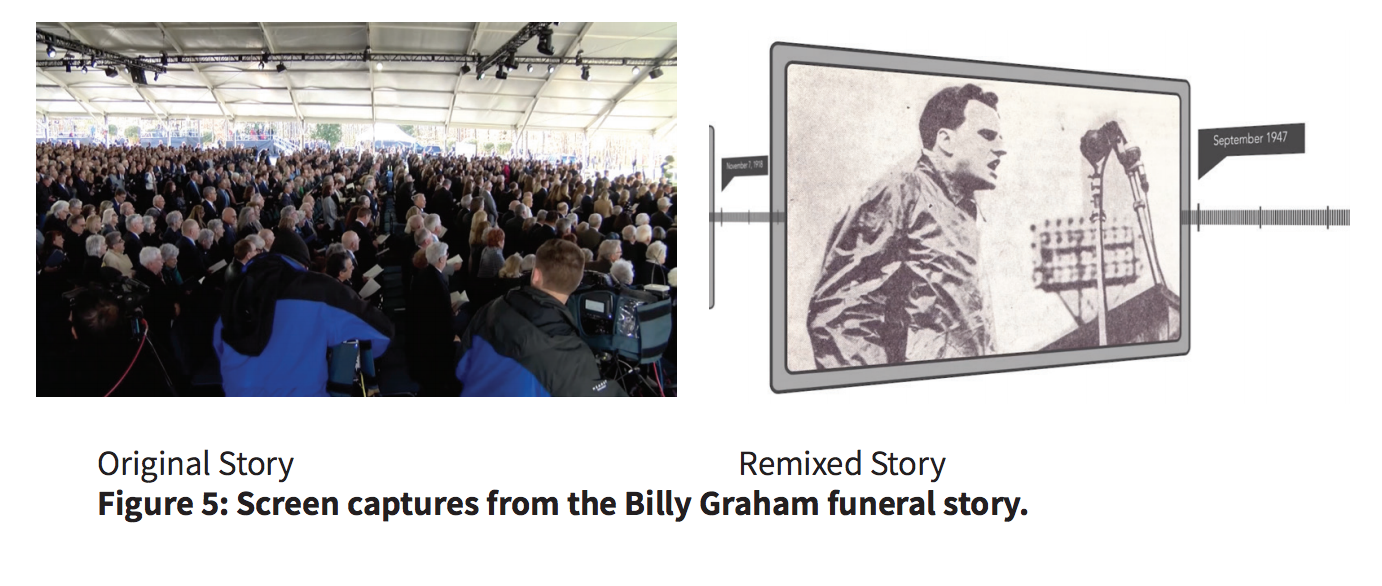
Would more young people watch local TV news if it looked more like a Vox video and less like, uh, local TV news?
It’s worth a try, according to a report released by Shorenstein and Northeastern this week. The authors suggest that local TV stations “remix” their hard news offerings by borrowing tactics from digital-native publications — incorporating animation and historical video, for instance. A limited test of these remixed videos suggested that the technique was effective — although it doesn’t fix the problem that TV ownership is declining.
People over 50 are much more likely to watch local TV news than younger people. Pew reported last year that 28 percent of 30- to 49-year-olds say they “often” get news from local TV; just 18 percent of 18- to 29-year-olds said the same thing.Mike Beaudet, John Wihbey, and their team at Northeastern watched hundreds of hours of local TV news and found that “most local television news operations are sticking to a traditional format, a recipe that’s been around for decades. News, weather, sports, and a dash of anchor happy talk. Wash, rinse, repeat.” Videos from sites like Vox, NowThis, Snapchat, and Vice, meanwhile, “are eclectic and often have a more authentic feel and avoid the traditional storytelling approach of local TV news.”
The researchers partnered with six local TV stations across the country to create and test remixed versions of their stories, then had an audience research firm survey about 100 people in each of the six markets on their feelings about the traditional versus remixed videos.
“The results show there are opportunities for expanding the audience both on air and online if television stations are willing to more closely focus in on the key component of all good journalism: storytelling,” the authors write. “While remixing the stories did not resonate every time, we did see positive results on the group of hard news stories where we altered the storytelling approach. This experimentation included everything from incorporating animation and sound elements to providing more context and background on stories.”
One remixed hard news story that worked was about Billy Graham’s funeral in Charlotte:
The original Billy Graham funeral story is one minute and 37 seconds long while the remix is two-minutes and 26 seconds long. This additional time allowed us to bring in more context about Graham’s life and death. While the original story focused on the funeral itself and exclusively featured video from the service, our remix combined the funeral video and archival footage, including historical interviews with Graham, to spotlight some notable times throughout his life and career.
To help illustrate the impact of Graham’s life over many decades and give the story an edgier feel, we used a 50-second animated timeline with sound elements to highlight five significant periods for Graham, including controversial remarks he made in 1993 about AIDS being a “punishment” for homosexuality, something he apologized for a few weeks later.


Audiences were significantly more likely to describe the remixed hard news videos as interesting and visually appealing. Remixing did not seem to make a difference, meanwhile, with soft news stories (“dogs loose on freeway,” “injured goose”).
The researchers also surveyed audiences on what is important to them in local news, and found — perhaps counterintuitively — that respondents preferred depth over “short, quickly digestible content…asked to describe what their ideal local news program would look like, respondents fairly consistently chose depth over efficiency.”
You can read the full report here, and see more examples of the original and remixed videos here.